First time I met Satchmo
Comment Of The DayReader’s Comment of the Day from M Arnold:
First time I met Satchmo was Xmas time 1949. I had just bought a Louie 78 at Big Joe’s record store on W.46th St. I’m walking down B’way and I’m shocked to see Louie walking up B’way. I remember shouting “Satchmo” and the 2 of us walked, with our arms around each other, uptown to the Capitol Theatre where he was playing. I was so excited, I almost broke my record showing it to him. He invited me to visit him in his dressing room someday. A few days later, with a friend of mine, we bought tickets for a matinee show at the Capitol (75 cents?). After the show, we went to the stage door and I told the door man that Louie invited me to come up. He phoned up to his room, got the OK and up we went. Louie was resting in a cot and the first thing I noticed was the Star of David hanging from his neck and thought, can’t be, he can’t be Jewish! I have no idea what we said but, coming from school, I had my note book which had his picture pasted on the inside cover. He signed it (green ink) and it hangs on my wall today along with a second one he signed at another time.
The second time was my graduation night from H.S. We were having a marshmallow roast on the beach at Coney Island when I remember saying, “Satchmo’s playing at Bop City. Let’s go.” About 5 or 6 of us took the subway and ended up at Bop City on, I believe, 47th and B’way. I told Louie who we were and he made an announcement, the exact words I still remember: “There’s a buncha kids just graduated from Erasmus Hall High School and I’d like to dedicate my next number to them.” He put his horn to his lips and blew Auld Lang Syne ending by skat singing,”old acquaintance, be forgot baba ba doo zip, yeah” all the time looking at me (us). A great musician and a warm wonderful person.
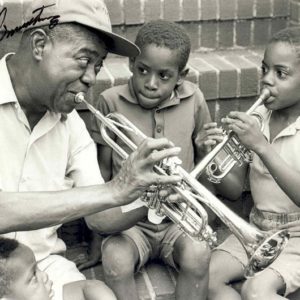

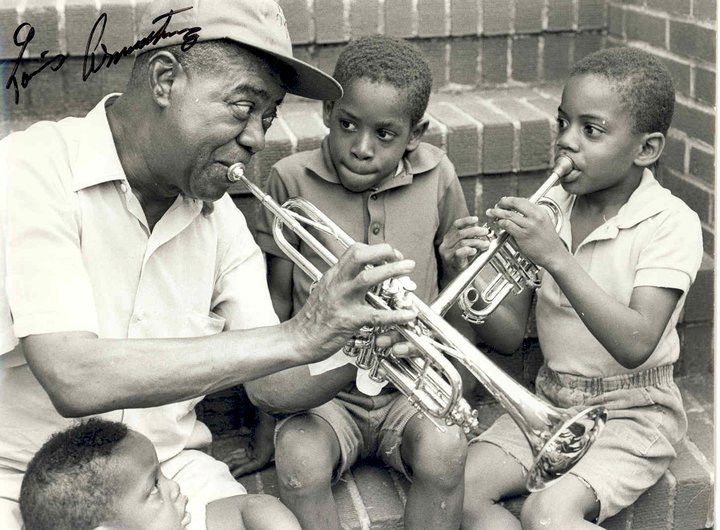
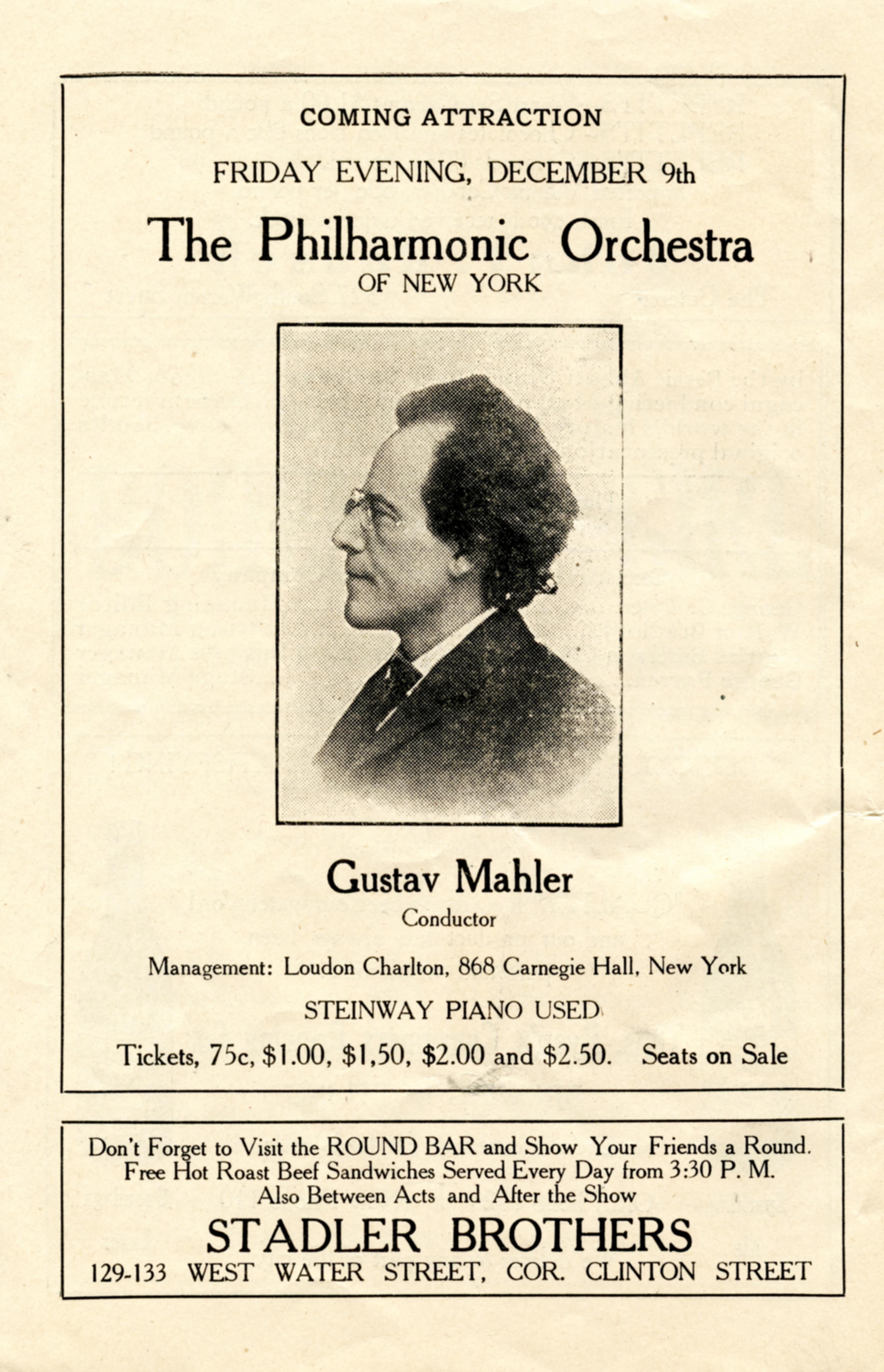
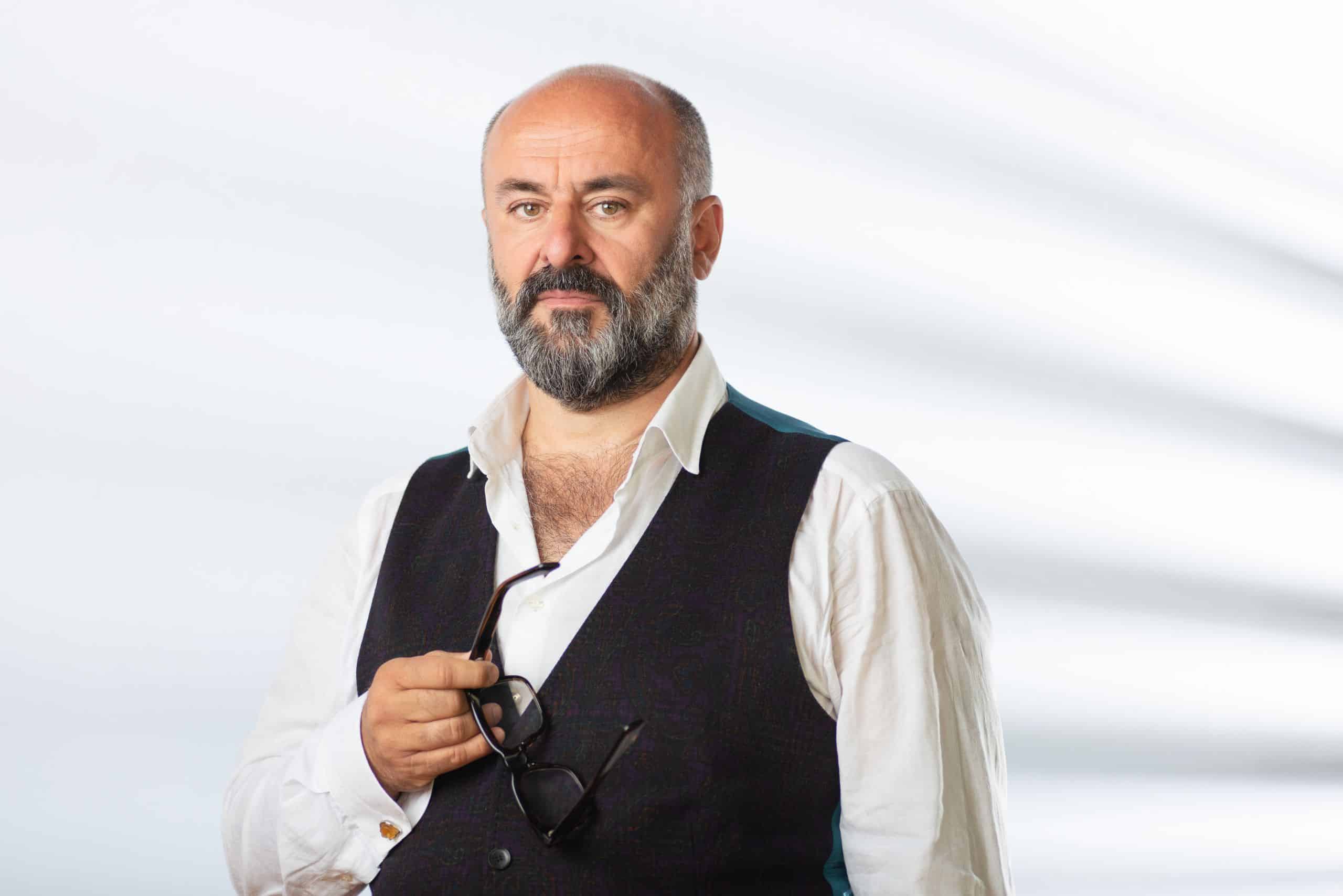
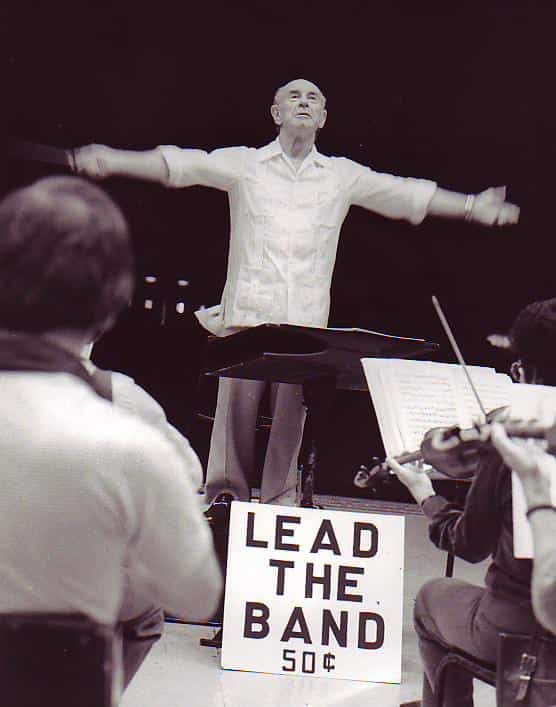

I was unfamiliar with the reason he wore a Star of David:
“A Jewish family Karnofsky, who immigrated from Lithuania to New Orleans, took pity on the 7-year-old boy and brought him to their home.
There he stayed and spent the night in this Jewish family home, where for the first time in his life he was treated with kindness and tenderness.
When he went to bed, Mrs Karnovski sang him Russian lullabies, which he sang with her.
Later he learned to sing and play several Russian and Jewish songs.
Over time, this boy became the adopted son of this family.
Mr. Karnofsky gave him money to buy his first musical instrument, as was the custom in Jewish families.
Later, when he became a professional musician and composer, he used these Jewish melodies in compositions such as St. James’s Hospital and Go Down Moses.
The little boy grew up and wrote a book about this Jewish family, who adopted him in 1907. And proudly spoke Yiddish fluently.
In memory of this family and until the end of his life, he wore the Star of David and said that in this family he learned “to live a real life and determination.”
This little boy’s name was Louis Armstrong.”
Where did you find this story, Amos?
The column also has a bio link.
https://www.showbiz411.com/2021/07/06/louis-armstrong-died-50-years-ago-today-at-age-69-left-a-legacy-of-genius-and-love-with-his-music
OK, but there’s nothing about him being “adopted” by the Karnofskys or speaking Yiddish fluently! And what ‘s the name of the “little book” Armstrong supposedly wrote? This whole story sound like a complete fabrication. Great Holly PR. Actually, I would have guessed that Armstrong’s long time manager, Joe Glaser, might have given him the star of david, not for religious reasons, of course, but perhaps as a “good luck” symbol. Who knows? The main thing is that Louis’s music lives on, it will never die.
We should note that while Armstrong recorded “St. James Infirmary” (or “Hospital”) he did not compose it.
If he ever incorporated any Jewish motifs into improvised passages, I have no idea.
Humm, humm… sounds like a made up story maybe from one of his managers? A propaganda delight 😉 just my opinion, of course 😉
Like Orson Welles, Louis Armstrong loved to spin good tales, much to the distress of historians and biographers.
The association with Jewish family seems to be a real thing. The exact details… well, it’s not like anyone else was paying attention back then.
The transformative influence of the Karnofsky family upon the life and music of Louis Armstrong relates to how African American and Jewish American improvisers, composers and lyricists yielded synergistic musical magic together in the art form known as American jazz, echoing how Hindu and Muslim cultures commingling resulted in North Indian classical music, another towering musical form. Both jazz and Indian classical music are based upon improvisation, jazz (mostly Swing and Modern) using standards and blues forms, and Indian classical using ragas as a basis for extemporization. One of myriad examples is how two of the greatest Charlie Parker recordings, All the Things You Are and The Song Is You, and two of the greatest John Coltrane recordings, Softly As In A Morning Sunrise and My Favorite Things, share a common link, namely lyricist Oscar Hammerstein II, together with composers Jerome Kern, Sigmund Romberg and Richard Rodgers. Some are unaware of how the finest jazz artists were intimate with the lyrics of standards, profoundly coloring their interpretations. An Italian American vocalist whom many jazz greats, including Miles Davis and Lee Konitz, valued as the preeminent jazz singer, Frank Sinatra, went so far as to say the lyrics were more important than the music for himself. Another unexplored influence in jazz history is Native American culture, considering, to cite but two examples, how the greatest jazz artist of all time, Charlie Parker, had a mother who was Native American, and legendary bassist, Oscar Pettiford had a Native American mother and a father who was both African American and Native American.
http://www.azuremilesrecords.com/Into_a_Newborn_Day_Words_Inspiring_Jazz.html
http://www.azuremilesrecords.com/pointersbecoming.html
The Star of David was very personal to Satchmo. It was not worn outside his shirt and was, therefore, not visible to anybody. I saw it because when I was in his dressing room he was lying on a cot in his shorts and undershirt.
Great stories, lucky M. Aenold.